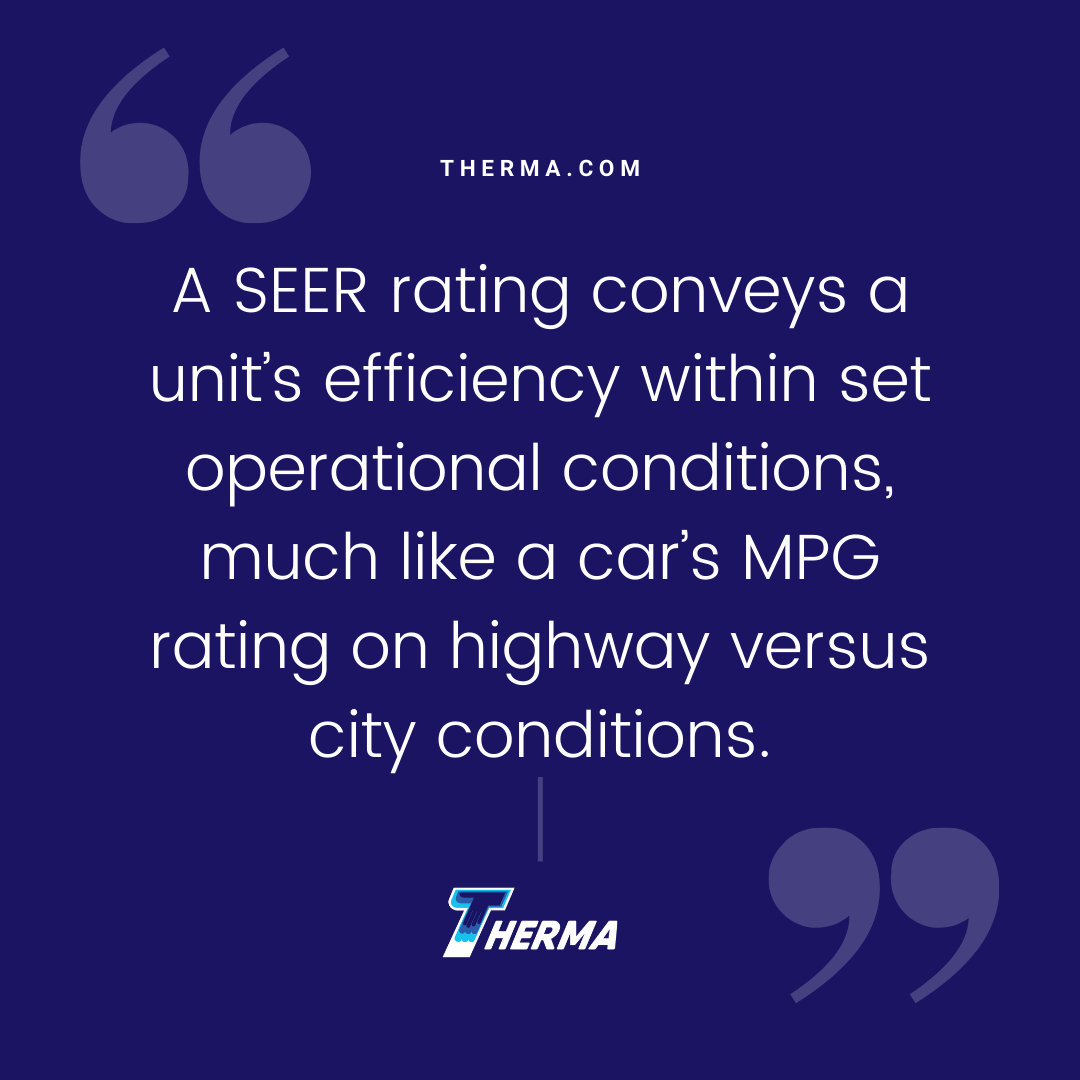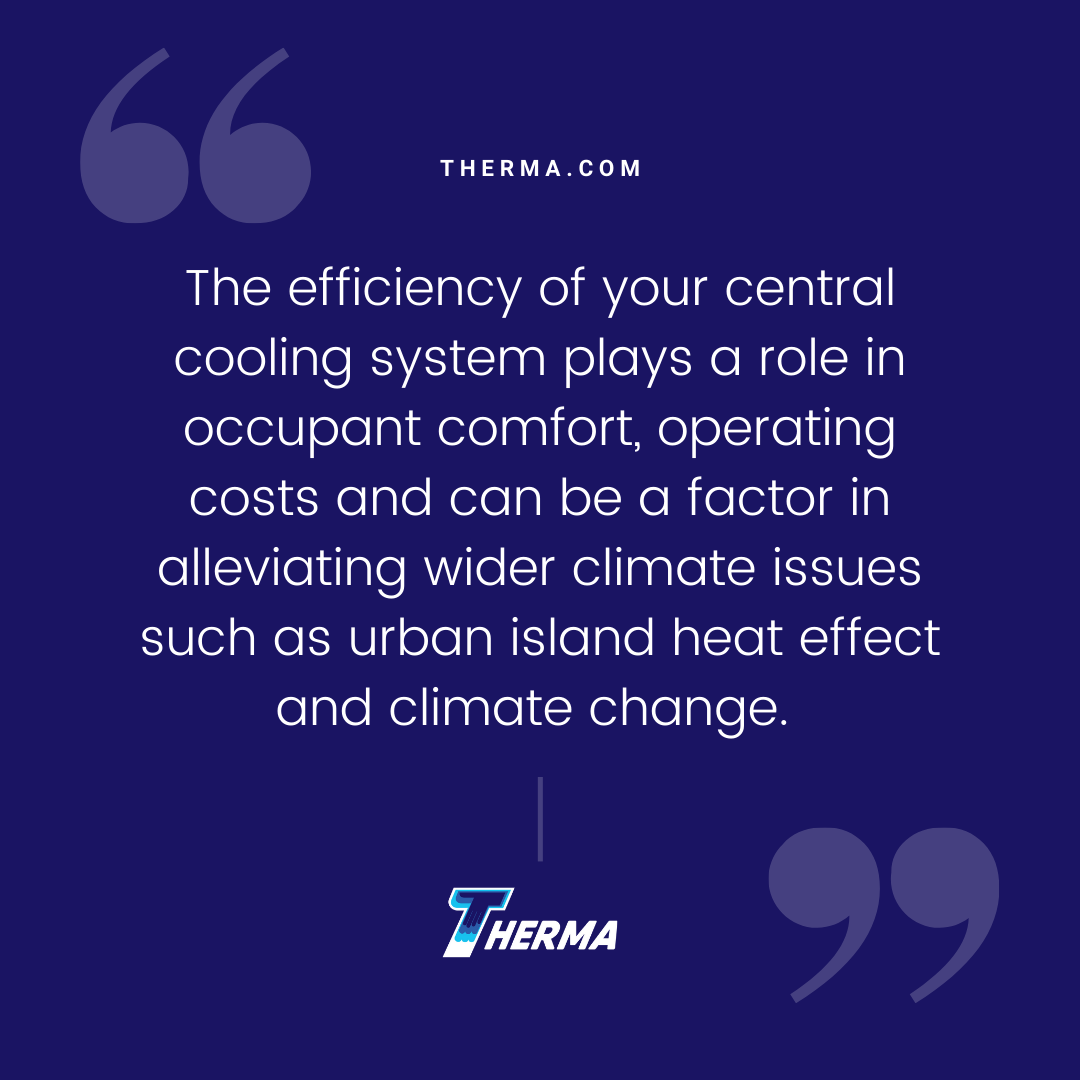by Ali Kriscenski
The efficiency of your central cooling system plays a role in occupant comfort, operating costs and can be a factor in alleviating wider climate issues such as urban island heat effect and climate change. While it may seem daunting to understand how your system works, the Seasonal Energy Efficiency Ratio (SEER) rating offers a tool to help you navigate HVAC performance.
What Is A SEER Rating?
The SEER rating is based on standards set by the Air Conditioning, Heating, and Refrigeration Institute (AHRI) and enforced by the US Department of Energy (DOE). The rating conveys a ratio of how much energy an AC unit will use in a year compared to its output. The SEER number helps consumers understand the energy usage of their HVAC system, similar to fuel economy ratings for cars.
The ratings are developed to set minimum performance efficiency standards of residential and small commercial central air conditioning systems. These systems use standalone AC units that house condenser and compressor components connected to ductwork that moves cooled air and removes warmer air throughout a building.
In 2006, the DOE started requiring all new central AC units to have a minimum SEER rating of 13. While today’s AC units average 15-18, the average efficiency was much lower prior to the DOE’s regulation.
Currently, air conditioning units in southern states are required to have a SEER rating of 14 and those in northern states are required to hold a rating of 13. This will change with a new standard in 2023, raising the rating requirements by one point in each region, respectively.

How Does The SEER Help Facilities Choose the Best AC System?
There are many factors that determine a building’s energy efficiency such as design, size, site orientation, and geographic location. A SEER rating conveys a unit’s efficiency within set operational conditions, much like a car’s MPG rating on highway versus city conditions. When choosing an AC, the conditions it will operate within are important to factor into the decision.
- Building Size: The central AC system needs to consider square footage and ceiling height to size the unit properly.
- Location: Regional climate differences affect air conditioning requirements including seasonal temperatures, latitude and direct sun exposure and humidity.
- Glazing: The effectiveness of your windows and doors to maintain heating and cooling objectives will affect your AC unit selection.
- Existing Insulation: A well-insulated exterior is the first line of defense in HVAC efficiency. Older buildings built to older codes will need a larger AC unit to compensate for the energy loss.
- Existing Ductwork: When upgrading your AC unit, it’s important to check the ductwork condition, size and layout to ensure the new system will meet expectations.
SEER and Energy Savings
SEER ratings let consumers know how much energy savings to expect with a particular AC model. The less energy used, the higher the rating. The higher the efficiency, the less spent on utility costs. While it may seem like the simplest path is to purchase a central AC unit with the highest possible SEER rating, there are cost considerations.
AC systems tend to rise in price in correlation to their efficiency. The highest efficiency models are going to incur higher upfront costs, and may require other system improvements (ductwork, insulation, etc) to maximize the investment. Additionally, a larger unit may cool a facility quicker, but it won’t run at long-enough intervals to control humidity. The right unit will provide energy savings and optimal comfort.
In addition to upgrading your AC system, their are other ways to improve HVAC efficiency:
- Perform regular HVAC preventative maintenance
- Change air filters
- Replace ductwork and insulation
- Use energy efficient windows and light fixtures

Hiring an HVAC Contractor
Purchasing or replacing a new central air conditioning system is a big investment. There are many interrelated factors that will determine the right system for your space. An HVAC contractor like Therma can help you identify the optimal size AC unit as well as identify any additional system or energy saving improvements needed. Once you know the size needed, you can find a system that meets your budget and energy savings goals.
Ali Kriscenski was trained in high-performance building design at Boston Architectural College. She has worked with leading architecture and construction firms in NYC and New England, and served on the executive team at Forest Stewardship Council International. She was Managing Editor at Inhabitat and has worked pro bono for the Green Building Institute, ISEAL Alliance, and Habitat for Humanity.
Sources:
Air Conditioning, Heating, and Refrigeration Institute (AHRI) – ANSI/AHRI Standard 210/240 with Addenda 1 and 2
U.S. Energy Information Administration (EIA) – Efficiency requirements for residential central AC and heat pumps







